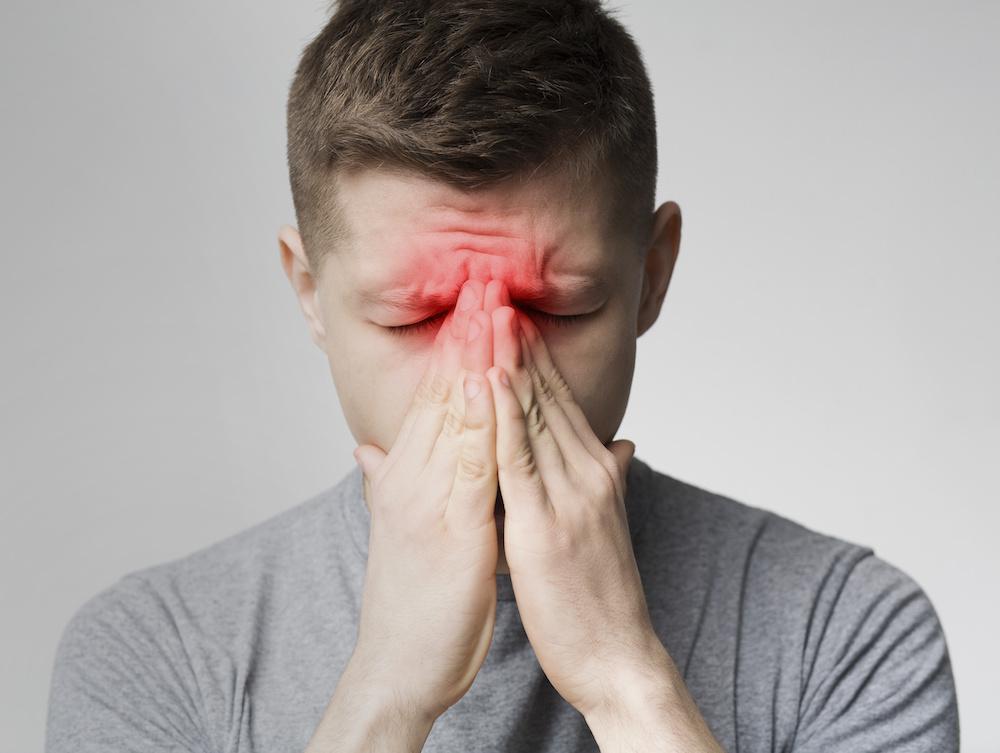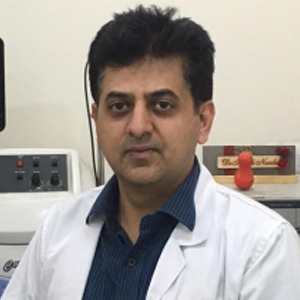
Allergic rhinitis and chronic sinusitis are lifestyle diseases causing enormous morbidity to the patients. Functional endoscopic sinus surgery (FESS) has revolutionised the treatment of sinusitis. We now introduce endoscopic VNC for the treatment of intractable allergic sinusitis.
Rhinoplasty NO Plastic! NO Synthetics!
The development of rhinoplasty occurred primarily as a plastic surgery technique to restore a proportional nose shape, whether after injury or due to a birth defect. In addition to these corrective procedures, surgeons now use cosmetic plastic surgery to perform subtle aesthetic changes to nose size and shape.
Nose Allergies
An allergy is a hypersensitivity to foreign substances which are normally harmless . Typical allergic reactions are hay fever, migraine, asthma, allergic rhinitis, digestive disturbances, conjunctivitis, urticaria, eczema, recurrent sinusitis and ear infections. Common allergens include pollen, dust, moulds, cosmetics and different food items.
Allergies are of many types-
Seasonal nasal allergy If allergies bother you only at certain times of year, like in the spring when the trees begin to bloom, you have “hay fever,” or seasonal nasal allergies.
Perennial Nasal Allergy If your allergies seem to be with you all year long, you have perennial nasal allergies.
You can also have food and drug allergies, latex allergies, insect allergies, skin allergies and eye allergies.
Allergy Clinic
Kataria Eye &ENT Hospital Pvt. Ltd., Jalandhar has started an Allergy Clinic for the diagnosis and treatment of allergy problems. In this age of increasing pollution and use of chemicals ,the incidence of allergic problems has increased steadily . Kataria Eye & ENT Hospital has set-up an allergy management clinic to help in the diagnosis and treatment of allergy problems. Prick test ,which is considered to be the standard test for determining the cause of allergy has been introduced . After the cause of the allergy is identified , symptoms of the patient can be treated accordingly. The best way to manage an allergy is to avoid the substances that cause the allergic symptoms. Therefore it is very important to first identify the substances (allergens) causing the allergic reaction and then a combination of treatment modalities, including avoidance of the allergens, medication and immunotherapy is initiated Tips to reduce allergy
For Dust sensitive people, avoidance of dusty environments is crucial. Most people cannot control the dust conditions where they work but to a large extent everyone can reduce the dust load from their bedroom. This is the single most important and effective step in treatment. When symptoms suggest an allergy to dust mites , extensive cleaning of the house is mandatory.
Remove any rugs and carpets. For dust-sensitive people, bare hardwood or vinyl floors are preferable. If it is impossible to remove carpeting, a low pile is recommended.
Clean the house regularly as we spend one third of our lives in the bedroom; therefore, it is necessary to put on a dust mask and vacuum the room vigorously every day, and clean thoroughly every week. Throw rugs are better than carpeting, because they can be washed weekly in hot water. Products that kill mites are available and include benzyl benzoate to decrease the presence of the allergen in carpets.
Keep humidity low. Avoid humidifiers, because dust mites multiply in a humid environment.
Dust-proof the bedding. The bed should have mite-proof covers that completely encase the mattress and pillows. This is necessary even if the bedding is new. The pillows and mattresses should be made of fiber or coir rather than cotton.
Discard any feather or down pillows or quilts. Hypoallergenic pillows and washable blankets are preferable.
Eliminate other dust-catchers. If possible, remove all upholstered furniture, drapes, old books and newspapers, stuffed animals, even knickknacks. Use wooden or metal chairs, and lightweight fabric curtains.
Mattresses contain the highest concentration of dust mites, whose primary food source is flakes off human skin. The tiny creatures are also found in pillows, clothing, carpeting and upholstered furniture.
If both parents have allergies, their child has a 75% chance of having allergies. If one parent is allergic, or if relatives on the side of the family have allergies, then the child has about a 50% chance of developing allergies
Sinusitis
Sinuses are hollow air spaces in the face. These are cavities located within the skull or bones of the head surrounding the nose-
- Frontal sinuses over the eyes in the brow area
- Maxillary sinuses inside each cheekbone
- Ethmoid sinuses just behind the bridge of the nose and between the eyes
- Sphenoid sinuses behind the ethmoids in the upper region of the nose and behind the eyes
Each sinus has an opening into the nose for the free exchange of air and mucus, and each is joined with the nasal passages by a continuous mucous membrane lining. Therefore, anything that causes a swelling in the nose an infection, an allergic reaction, or another type of immune reaction also can affect the sinuses. Air trapped within a blocked sinus, along with pus or other secretions may cause pressure on the sinus wall. The result is the sometimes intense pain of a sinus attack. Similarly, when air is prevented from entering a paranasal sinus by a swollen membrane at the opening, a vacuum can be created that also causes pain. This kind of pain is often experienced in an air journey during the descent.Sinusitis
Sinusitis simply means your sinuses are infected or inflamed.
Acute sinusitis- lasts for 3 weeks or less.
Chronic sinusitis- lasts for 3 to 8 weeks but can continue for months or even years.
Endoscopic sinus surgery (FESS)
Functional endoscopic sinus surgery (FESS) is a minimally invasive surgical treatment which uses nasal endoscopes to enlarge the nasal drainage pathways of the paranasal sinuses to improve sinus ventilation. In most situations, the surgeon will employ endoscopic techniques that allow better and more precise visualization without the need for external incisions.
Advantages of Sinus Surgery-
- Less swelling,
- Minimal bleeding
- Minimal discomfort and Reduced Post operative pain
- Shorter hospital stay
- Less scarring with minimal incisions
- Quicker Recovery
Sinus surgery, involves the re-routing of existing sinus pathways in addition to removal of diseased tissue. Post-operative care is as equally important as the surgery itself.
After endoscopic sinus surgery
- Dressing: Light red to clear drainage from the nose is normal for 5-10 days following surgery. The outside gauze dressing needs to be changed when soiled or saturated.. Dressing is usually kept in place for 2 days. You are required to come to the clinic for its removal.
- Packing: Nasal packing is usually used after surgery. Do not attempt to blow the nose with packing in place. It is normal to have bad breath or small a foul odor while the packing is in place.
- Medications: Headache, sinus, or nasal discomfort is common after surgery and you should have medication for this. Antibiotics and/or a moisturizing saline spray may be prescribed.
- Activity: No swimming or strenuous activities should be performed for 10-14 days after surgery as this might because bleeding. You may resume your routine work from the 5th day onwards.
- Diet: Eat and drink normally. Avoid alcoholic beverages while taking medications.
- Saline Irrigations: Ten days after your nasal surgery, saline irrigations are recommended to reduce crusting and to keep the sinus opening clear. Mix 1 teaspoon table salt and 1 tablespoon baking soda in ½ liter boiled, warm water. Lean over a sink and irrigate both nasal passages. Irrigate twice a day, morning and evening.
Follow-up: You will need to be seen by your doctor for follow-up every 10 days following surgery for post operative cleaning. Specific instructions will be given to you at the time of discharge. An appointment is necessary and should be made before leaving the hospital When to obtain immediate care?
Contact the Doctor or the hospital in case of any one of the following-
- Excessive, bright red bleeding
- A lot of clear watery drainage form the nose, or profuse salty tasting drainage down the throat
- Double or blurred vision
- Decreased ability to move or close eyes, or eye pain
- Fever over 101 degrees Fahrenheit
- Stiffness or pain in the neck or decreased alertness
In case of any questions or concerns, please call the hospital or speak to Dr Harish Nanda between 8:00 pm and 9:00 pm.




